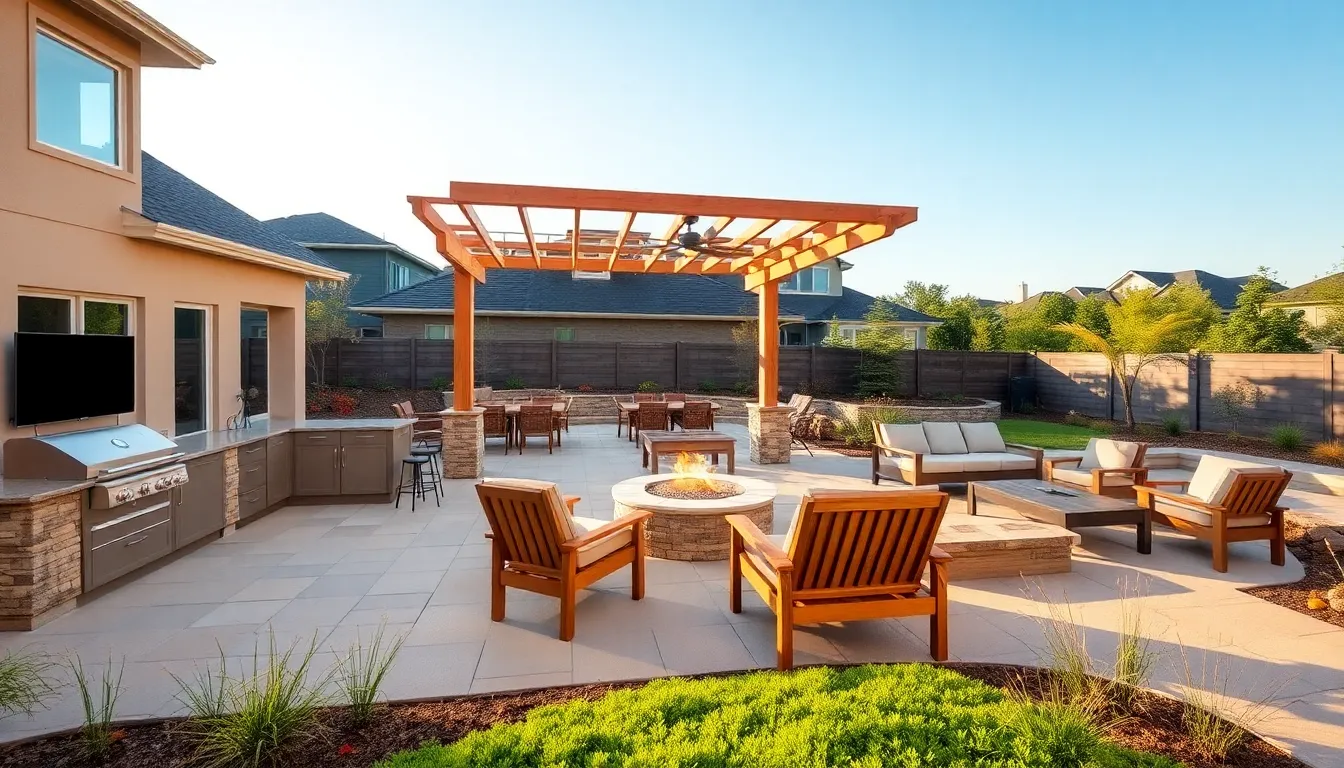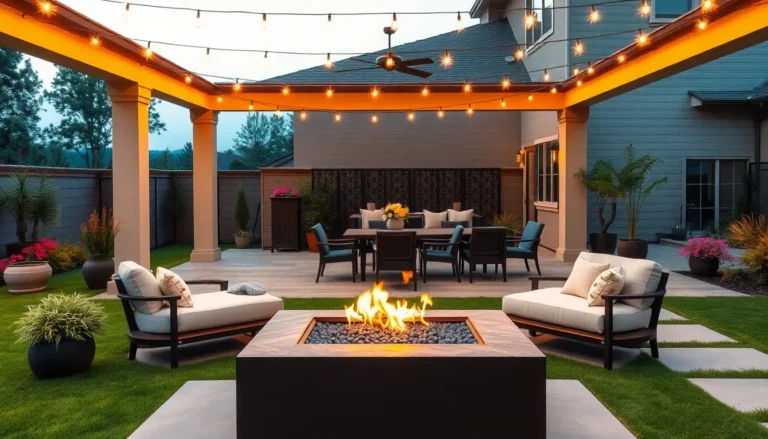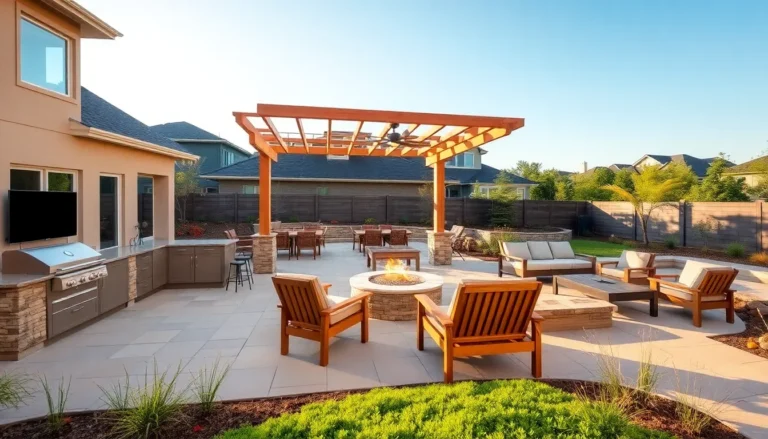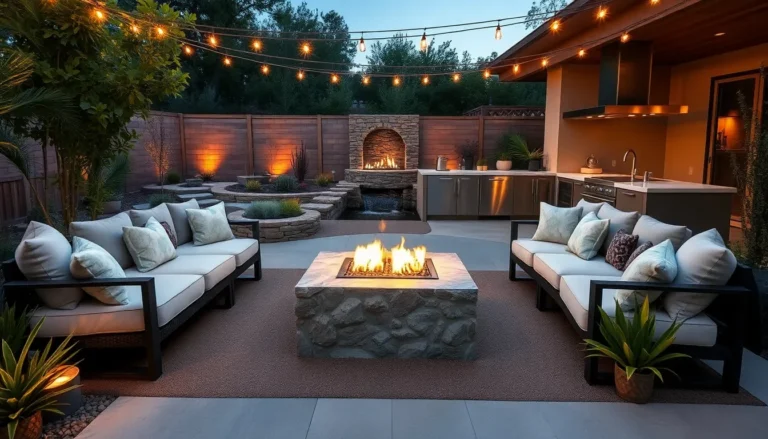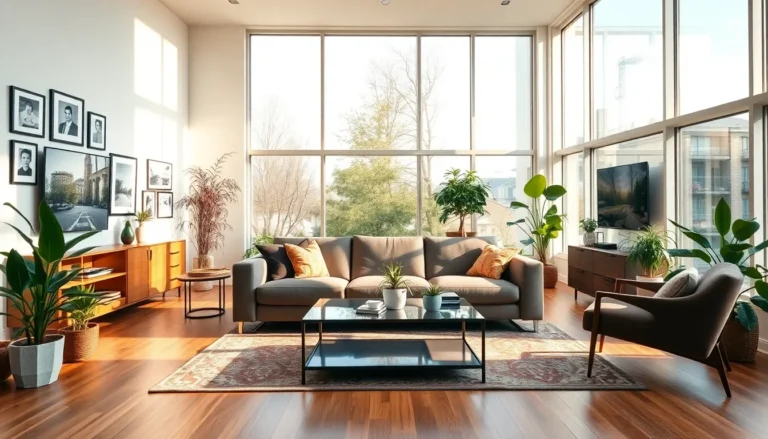Table of Contents
ToggleImagine a space where the great outdoors meets the comforts of home, a personal oasis that turns heads and signals to your neighbors that you’re the true outdoors aficionado. Custom outdoor living is not just a trend: it’s a lifestyle choice that adds value to your home, creates unforgettable memories, and, let’s be honest, makes your backyard the go-to gathering spot. Who wouldn’t want to enjoy a cocktail under the stars or savor barbecue on a custom deck? In this guide, we’ll explore the benefits, design considerations, and must-have features of custom outdoor living, ensuring you’re equipped to craft the haven you’ve always dreamed of.
Benefits of Custom Outdoor Living Spaces
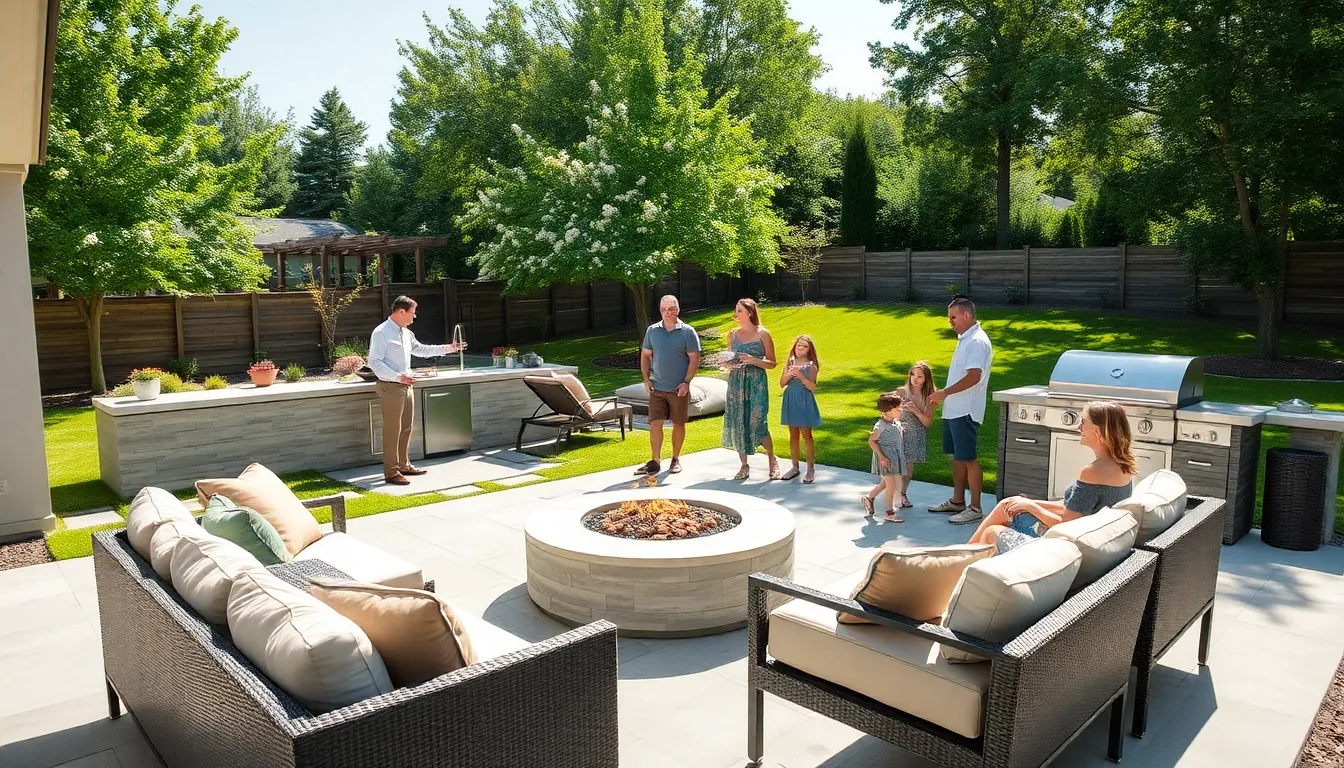
Custom outdoor living spaces have surged in popularity in recent years, and for good reason. First, they transform underutilized areas into functional extensions of your home. They provide a seamless transition from indoors to outdoors, allowing families to enjoy nature while still experiencing the conveniences of a modern home.
Imagine hosting a backyard barbecue, where laughter rings through the air amidst the aroma of sizzling burgers, sounds delightful, doesn’t it? A well-designed outdoor space enhances your lifestyle, encouraging more family gatherings, summer parties, or quiet evenings with a good book.
Also, such spaces increase property value. Real estate experts assert homes with well-developed outdoor areas can fetch significantly higher prices on the market. Why not invest in something that not only enhances your life now but pays dividends down the road?
Beyond practical aspects, custom outdoor living fosters improved well-being. Spending time in aesthetic, nature-inspired environments has been linked to reduced stress levels and increased happiness. If you’ve been feeling the weight of the world on your shoulders, a serene outdoor space could be the quick fix your soul craves.
Design Considerations for Your Outdoor Area
Before diving into design, it’s crucial to evaluate your needs and how you intend to use the space. Will it primarily be for entertaining guests, relaxation, or perhaps both? Understanding the purpose helps streamline the design process.
Next, consider the size of your outdoor area. A small balcony demands a different approach compared to an expansive backyard. Smaller spaces might benefit from compact furniture and vertical gardens, allowing you to maximize every inch. But, larger spaces can accommodate extensive features, like fire pits, elaborate seating arrangements, and even outdoor kitchens.
Think about the climate, too. For example, homeowners in hot climates may prioritize shaded areas or misting systems, while folks in cooler regions might lean towards cozy fireplaces or heat lamps to extend the outdoor season.
Finally, don’t forget to complement the architecture of your home. Consistency in design elements, like colors, materials, and textures, creates a harmonious appearance that ties your outdoor space to the overall look of your residence.
Popular Features in Custom Outdoor Living
When it comes to custom outdoor living, features can make or break the experience. Some popular additions include:
- Patios and Decks: These foundational structures create prime real estate for furnishings and entertaining.
- Outdoor Kitchens: From built-in grills to pizza ovens, an outdoor kitchen makes al fresco dining a breeze.
- Fire Pits: A gathering site for friends and family, fire pits add warmth and ambiance.
- Water Features: Fountains or ponds offer a soothing sound and aesthetic interest, making the space feel more tranquil.
- Pergolas and Awnings: These features provide shade and can be adorned with plants or lights to add character.
- Furniture: An array of styles, from sleek and modern to cozy and rustic, allows for personalization of your space.
Each of these elements can enhance functionality and create an inviting atmosphere that showcases individuality.
Choosing the Right Materials for Durability and Aesthetics
Selecting the appropriate materials for your outdoor living space is vital. Durability is essential, as outdoor areas face the brunt of the elements. Popular choices include:
- Composite Decking: This low-maintenance option resists fading, moisture, and insects, ensuring your deck remains beautiful for years.
- Natural Stone: Ideal for patios and pathways, natural stone is both durable and visually appealing, offering a timeless look.
- Teak Furniture: Known for its weather resistance, teak is perfect for outdoor furniture, ensuring it withstands rain, sun, and time.
- Metal Accents: Materials like aluminum can add sleekness without the risk of rust.
Aesthetics also play a significant role in choosing materials. It’s essential to select textures, colors, and finishes that resonate with your personal style and harmonize with your home’s overall design. Planning wisely here will result in a cohesive and polished appearance.
Incorporating Lighting and Landscaping
Lighting can transform an outdoor space from day to night, creating moods that enhance gatherings or quiet evenings. Consider a layered approach:
- Task Lighting: Essential in kitchen areas for food preparation and serving.
- Accent Lighting: This highlights landscaping features or architectural details, creating visual interest.
- Ambient Lighting: String lights or lanterns can merge functionality with charm, promoting a cozy atmosphere.
Landscaping is another crucial aspect. Use plants that thrive in your climate, and consider seasonal changes to ensure year-round beauty. Native plants are often a wise choice, as they require less maintenance and promote local wildlife.
By blending thoughtful landscaping and effective lighting, a custom outdoor living space evolves from merely usable to truly enchanting.
Budgeting for Your Custom Outdoor Living Project
Budgeting is undoubtedly a significant step when it comes to custom outdoor living projects. Start by defining your priorities. Are there specific features you absolutely want to include? Identifying these areas allows you to allocate funds effectively.
Research local costs, and get multiple quotes from contractors or designers to gauge the market rate. This practice can prevent surprises during the planning process. Consider setting aside a contingency fund, around 10-15% of your total budget, for any unexpected expenses.
Don’t forget to account for ongoing maintenance costs. Regular upkeep, like cleaning surfaces or replacing lights, should be factored in to keep your space looking pristine.
Finally, remember that investing in quality materials typically pays off long-term. Opting for cheaper materials may lead to frequent replacements and higher costs in the future, negating initial savings.
Maintaining and Upkeeping Your Outdoor Living Space
Maintaining your custom outdoor living area is crucial for prolonging its beauty and functionality. Regular cleaning should be a part of your routine. This entails clearing debris, washing surfaces, and ensuring that furniture is protected from the elements when not in use.
Inspect features like lights or outdoor kitchens periodically to catch any issues before they become significant problems. Seasonal maintenance ensures everything stays in top shape, from checking for rust on metal parts to ensuring that plants are properly pruned and healthy.
Use appropriate cleaners for specific materials to avoid damage: for example, wood requires different care than stone.
Finally, consider investing in protective covers for furniture and features during harsh weather conditions, ensuring longevity and reducing wear.

